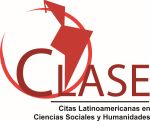Valoración económica del área de conservación regional de Codo de Pozuzo-Perú
DOI:
https://doi.org/10.56219/revistadeinvestigacin.v47i110.2049Palabras clave:
beneficios intertemporales; servicios ecosistémicos; transferencia; valoración económicaResumen
Los bosques tropicales son fuente reguladora de temperatura y hábitat de especies de flora y fauna, que están siendo vulnerados por el crecimiento de la población urbana y la expansión de la superficie agrícola, principalmente por demanda internacional de productos agrícolas orgánicos. El objetivo fue elaborar una valoración económica del Área Conservación Regional Codo de Pozuzo, declarada como tal en febrero del 2021; para ello, se aplicó la metodología de transferencia de beneficios, fundamentada en una revisión documental; se recopiló la producción científica mundial mediante sistematización de información, delimitando al grupo de servicios ecosistémicos identificados en el ámbito de la investigación. Se evidenció que el valor económico de conservar 10 453.45 hectáreas es de $ 457 474.39/año y que el valor actual de los beneficios con conservación es mayor que cuando no existía la zona de conservación, concluyendo que los servicios ecosistémicos de uso directo son los más valorados.
Citas
Arneth, A., Harrison, S. P., Zaehle, S., Tsigaridis, K., Menon, S., Bartlein, P. J., & Schurgers, G. (2010). Terrestrial biogeochemical feedback in the climate system. Nature Geoscience, 3(8), 525. http://dx.doi.org/10.1038/ngeo905
Banco Mundial. (2020). Subnational Studies. Measuring Business Regulations. https://datos.bancomundial.org/indicator/NY.GDP.MKTP.KD.ZG
Baral, S., Basnyat, B., Khanal, R. & Gauli, K. (2016). A total economic valuation of wetland ecosystem services: An evidence from Jagadishpur Ramsar site, Nepal. The scientific world journal. https://doi.org/10.1155/2016/2605609
Corlett, R. T. (2013). The shifted baseline: Prehistoric defaunation in the tropics and its consequences for biodiversity conservation. Biological Conservation, 163, 13-21. https://doi.org/10.1016/j.biocon.2012.11.012
De Groot, R., Brander, L., Van Der Ploeg, S., Costanza, R., Bernard, F., Braat, L. & Hussain, S. (2012). Global estimates of the value of ecosystems and their services in monetary units. Ecosystem Services, 1(1), 50-61. https://doi.org/10.1016/j.ecoser.2012.07.005
Deklerck, V., De Mil, T., Ilondea, B., Nsenga, L., De Caluwé, C., Van den Bulcke, J., Van Acker, J., Beeckham, H. & Hubau, W. (2019). Rate of forest recovery after fire exclusion on anthropogenic savannas in the Democratic Republic of Congo. Biological Conservation, 223, 118-130. https://doi.org/10.1016/j.biocon.2019.02.027
Dwomoh, F., Wimberly, M., Cochrane, M. & Numata, I. (2019). Forest degradation promotes fire during drought in moist tropical forests of Ghana. Forest Ecology and Management, 440, 158-168. https://doi.org/10.1016/j.foreco.2019.03.014
El Peruano. (2021, 11 de febrero). Aprueban la propuesta del área de conservación regional “Bosque Montano de Carpish” y su expediente técnico. El Peruano. https://busquedas.elperuano.pe/normaslegales/decreto-supremo-que-establece-el-area-de-conservacion-region-decreto-supremo-n-014-2021-minam-1976265-2/
Gang, C., Zhou, W., Li, J., Chen, Y., Mu, S., Ren, J., & Groisman, P. Y. (2013). Assessing the Spatiotemporal Variation in Distribution, Extent and NPP of Terrestrial Ecosystems in Response to Climate Change from 1911 to 2000. PLoS One, 8(11). https://doi.org/10.1371/journal.pone.0106175
Gavilán, L., Grau, J., y Oberhuber, T. (2011). Valoración económica de la biodiversidad, oportunidades y riesgos. Ecologistas en Acción. https://www.ecologistasenaccion.org/IMG/pdf/cuaderno_conclusiones.pdf
Gobierno Regional de Huánuco. (2008). Plan Estratégico Regional Agrario 2008 – 2021. http://minagri.gob.pe/portal/download/pdf/conocenos/transparencia/planes_estrategicos_regionales/huanuco.pdf
Hernández-Sampieri, R. & Mendoza, C. (2018). Metodología de la investigación: las rutas cuantitativa, cualitativa y mixta. McGraw Hill. http://www.biblioteca.cij.gob.mx/Archivos/Materiales_de_consulta/Drogas_de_Abuso/Articulos/SampieriLasRutas.pdf
Ilazaca, G. & Luz, N. (2013). Valoración económica de la reserva nacional del Titicaca-Puno Perú. https://alicia.concytec.gob.pe/vufind/Record/RNAP_f40de1defc6ad01cdd5db5bb8093770b
Keenan, R. J., Reams, G. A., Achard, F., de Freitas, J. V., Grainger, A. & Lindquist, E. (2015). Dynamics of global forest area: Results from the FAO Global Forest Resources Assessment 2015. Forest Ecology and Management, 352, 9-20. https://doi.org/10.1016/j.foreco.2015.06.014
Kurten, E. L. (2013). Cascading effects of contemporaneous defaunation on tropical forest communities. Biological Conservation, 163, 22-32. https://doi.org/10.1016/j.biocon.2013.04.025
Labandeira, X., León, C. J. & Vázquez, M. X. (2007). Economía ambiental. Pearson educación. http://190.57.147.202:90/xmlui/bitstream/handle/123456789/525/Economia%20Ambiental%20Labandeira.pdf?sequence=1&isAllowed=y
Landolt, M. & Kometter, R. (2017). Valoración económica de los bienes y servicios ecosistémicos en la Comunidad Campesina Kiuñalla, Apurímac, Perú. Bosques Andinos, (10), 1-36.
Laurance, W. F., Nascimento, H. E., Laurance, S. G., Andrade, A., Ewers, R. M., Harms, K. E., & Ribeiro, J. E. (2007). Habitat fragmentation, variable edge effects, and the landscape-divergence hypothesis. PLoS one, 2(10). https://doi.org/10.1371/journal.pone.0001017
León Morales, F. (2007). El aporte de las Áreas Naturales Protegidas a la economía nacional. Australian Dental Journal, 28(2). https://www2.congreso.gob.pe/sicr/cendocbib/con2_uibd.nsf/5EE4AA003E9A18FD052575B300601F09/$FILE/libro_aporte_anp_eco_nac.pdf
Lewis, S. L., Edwards, D. P. & Galbraith, D. (2015). Increasing human dominance of tropical forests. Science, 349(6250), 827-832. https://doi.org/10.1126/science.aaa9932
Liu, Z., Ballantyne, A. & Cooper, L. (2019). Biophysical feedback of global forest fires on surface temperature. Nature Communications, 10(1). http://dx.doi.org/10.1038/s41467-018-08237-z
Manta, M., (2017). Contribución al conocimiento de la prevención de los incendios forestales en la sierra peruana. Fondo Editorial-UNALM. http://repositorio.lamolina.edu.pe/handle/UNALM/4302
Manta, M. I. & León, H. (2004). Los incendios forestales en el Perú: grave problema por resolver. Floresta, 34(2), 179-189. http://dx.doi.org/10.5380/rf.v34i2.2392
Martín-López, B., Montes, C., Ramírez, L., y Benayas, J. (2009). What drives policy decision-making related to species conservation? Biological Conservation, 142(7), 1370-1380. https://doi.org/10.1016/j.biocon.2009.01.030
McKinney, L. A., Kick, E. L. & Fulkerson, G. M. (2010). World system, anthropogenic, and ecological threats to bird and mammal species: a structural equation analysis of biodiversity loss. Organization & Environment, 23(1), 3-31. https://doi.org/10.1177/1086026609358965
Millennium Ecosystem Assessment. (2005). Ecosystems and Human Well-being: Synthesis. Island Press. https://www.millenniumassessment.org/documents/document.356.aspx.pdf
Ministerio de Economía y Finanzas. (2019, 23 de agosto). Marco Macroeconómico Multianual 2020-2023. El Peruano. https://www.ipe.org.pe/portal/marco-macroeconomico-multianual-mmm-2020-2023/
Meunier, C. L., Gundale, M. J., Sánchez, I. S., & Liess, A. (2016). Impact of nitrogen deposition on forest and lake food webs in nitrogen‐limited environments. Global Change Biology, 22(1), 164-179. https://doi.org/10.1111/gcb.12967
Meyerholt, J., y Zaehle, S. (2015). The role of stoichiometric flexibility in modelling forest ecosystem responses to nitrogen fertilization. New Phytologist, 208(4), 1042-1055. https://doi.org/10.1111/nph.13547
Ministerio del Ambiente. (2018, 2 de octubre). Geo Bosques. http://geobosques.minam.gob.pe/geobosque/view
Mligo, C. (2019). Post fire regeneration of indigenous plant species in the Pugu Forest Reserve, Tanzania. Global Ecology and Conservation, 18, 1-10. https://doi.org/10.1016/j.gecco.2019.e00611
Montoya, T. (2018). Adaptación de la arquitectura de los colonos austroalemanes al clima cálido húmedo de altura. Desde el Tirol a la selva alta peruana, 1857-1960. Investiga Territorios, 8, 39–53. https://revistas.pucp.edu.pe/index.php/investigaterritorios/article/view/24379
Nemani, R., Keeling, C., Hashimoto, H., Jolly, W., Piper, S., Tucker, C., Mineni, R. & Running, S. (2003). Climate-driven increases in global terrestrial net primary production from 1982 to 1999. Science, 300(5625), 1560-1563. https://doi.org/10.1126/science.1082750
Nguyen, K. A. & Liou, Y. A. (2019). Mapping global eco-environment vulnerability due to human and natural disturbances. MethodsX, 6, 862-875. https://doi.org/10.1016/j.mex.2019.03.023
Organización de las Naciones Unidas para la Alimentación y la Agricultura. (2020). El estado de los bosques del mundo 2020: Los bosques, la biodiversidad y las personas. FAO and UNEP. https://doi.org/10.4060/ca8642es
Oris, F., Asselin, H., Ali, A., Finsinger, W. & Bergeron, Y. (2014). Effect of increased fire activity on global warming in the boreal forest. Environmental Reviews, 22(3), 206-219. https://doi.org/10.1139/er-2013-0062
Póveda, R. A. (2006). Recursos naturales. En B. Mundial, Oportunidad de un país diferente: próspero, equitativo y gobernable. Banco Mundial. https://www.mef.gob.pe/contenidos/pol_econ/documentos/BM_Peru_un_pais_diferente.pdf
Pratolongo, E. A. (2005). Áreas críticas para la biodiversidad. Revista de biología, (20). https://www.academia.edu/2381871/%C3%81reas_cr%C3%ADticas_para_la_biodiversidad
Prăvălie, R. (2018). Major perturbations in the Earth's forest ecosystems. Possible implications for global warming. Earth-Science Reviews, 185, 544-571. https://doi.org/10.1016/j.earscirev.2018.06.010
Quintas-Soriano, C., Martín-López, B., Santos-Martín, F., Loureiro, M., Montes, C., Benayas, J., & García-Llorente, M. (2016). Ecosystem services values in Spain: A meta-analysis. Environmental Science & Policy, 55, 186-195. https://doi.org/10.1016/j.envsci.2015.10.001
Ren, L., Ma, X. Z., & Li, C. S. (2014). Effects of forest fire on soil property and greenhouse gas flux. Chinese Journal of Ecology, 33(2), 502-509. https://www.researchgate.net/publication/288442516_Effects_of_forest_fire_on_soil_property_and_greenhouse_gas_flux
Saldarriaga, C. & Patiño, B. (2016). Transferencia de valores económicos para la estimación de impactos sobre cobertura boscosa en proyectos hidroeléctricos. Económicas CUC, 37(1), 43–62. https://doi.org/10.17981/econcuc.37.1.2016.02
Seidl, A. F., & Moraes, A. S. (2020). Global valuation of ecosystem services: application to the Pantanal da Nhecolandia, Brazil. Ecological economics, 33(1), 1-6. https://doi.org/10.1016/S0921-8009(99)00146-9
Servicio Nacional de Áreas Naturales Protegidas por el Estado. (2013). Áreas de Conservación Regional. SERNANP. https://cutt.ly/1NqRMv0
Servicio Nacional de Áreas Naturales Protegidas por el Estado. (2018, 10 de febrero). Memoria Anual. SERNANP. http://old.sernanp.gob.pe/sernanp/documento_cas.jsp?ID=212
Tognelli, M., Lasso, C., Bota-Sierra, C. J., Segura, L. & Cox, N. (2016). Estado de Conservación y Distribución de la Biodiversidad de Agua Dulce en los Andes Tropicales. UICN. https://doi.org/10.2305/IUCN.CH.2016.02.es
Torras, M. (2000). The total economic value of Amazonian deforestation, 1978–1993. Ecological economics, 33(2), 283-297. https://doi.org/10.1016/S0921-8009(99)00149-4
Tovar Narváez, A., Tovar Ingar, C., Saito Díaz, J., Soto Hurtado, A., Gastelumendi, F. R., Cruz Burga, Z., Rivera Campos, G. (2010). Yungas Peruanas – Bosques montanos de la vertiente oriental de los Andes del Perú: Una perspectiva ecorregional de conservación.
Wang, Y. P. & Houlton, B. Z. (2009). Nitrogen constraints on terrestrial carbon uptake: Implications for the global carbon‐climate feedback. Geophysical Research Letters, 36(24). https://doi.org/10.1029/2009GL041009
Wingfield, M., Brockerhoff, E., Wingfield, B. & Slippers, B. (2015). Planted forest health: The need for a global. Science, 349(6250), 832-836. https://doi.org/10.1126 / science.aac66

Archivos adicionales
Publicado
Cómo citar
Número
Sección
Licencia
Derechos de autor 2023 REVISTA DE INVESTIGACIÓN

Esta obra está bajo una licencia internacional Creative Commons Reconocimiento-NoComercial-CompartirIgual 3.0.







 ISSN.
ISSN.